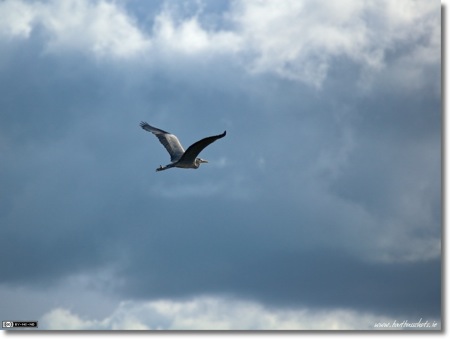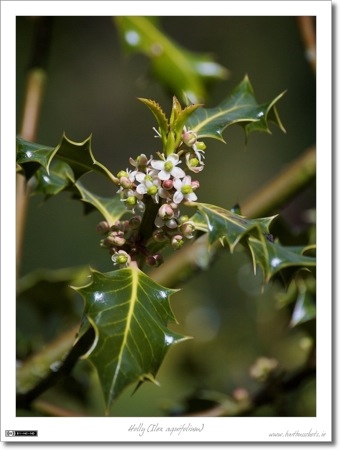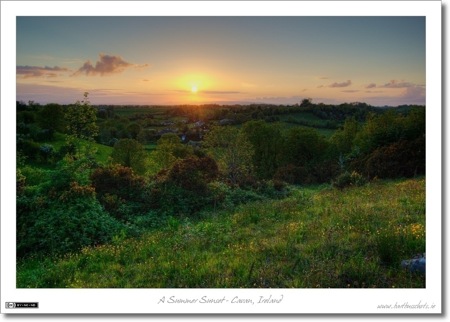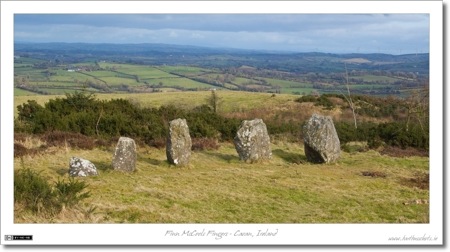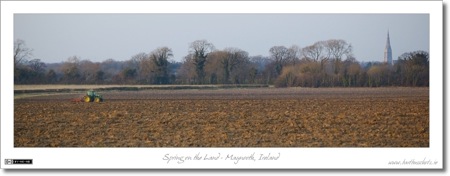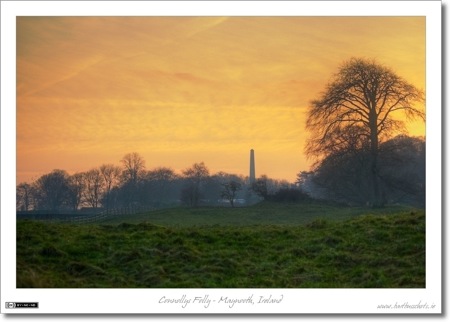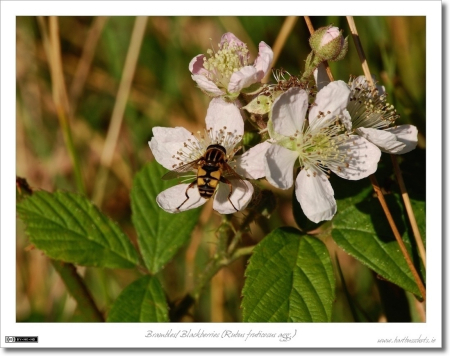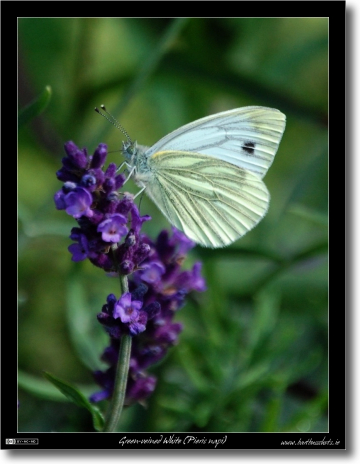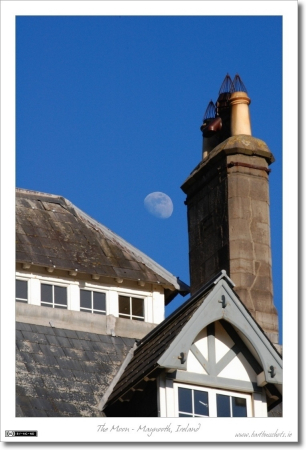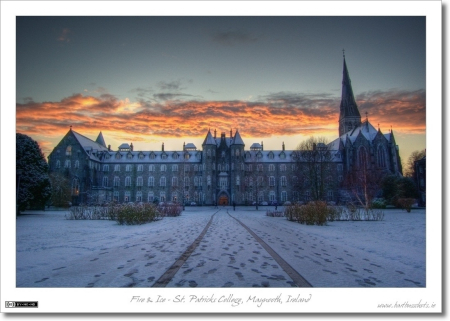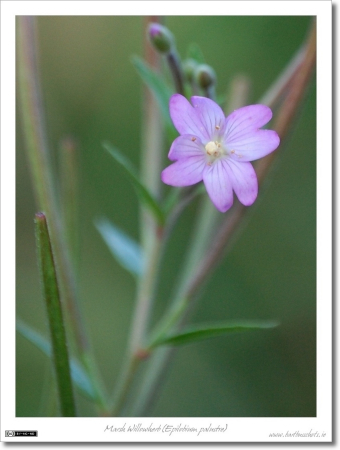Jul
28
Photo of the Week 75 – Into an Uncertain Sky
Filed Under Photography on July 28, 2009 | 2 Comments
I have a theory that there are two very different ways to come home with a great photo, meticulous preparation, and the ability to capitalise on serendipity. Meticulous preparation speaks for itself, you plan what it is you are going to shoot, how you are going to shoot it, and you do as much research as possible up-front so you know where to be when and with what gear. The second type of great shot comes from a completely different skill, awareness. I seldom go out with my camera without a plan, and I usually come home with the shots I’d planned, but, I don’t limit myself to the plan, I’m constantly on the lookout for unexpected shots. Serendipity can provide for some superb shots, if you just remember to stay alert for the call of opportunity.
In many way’s I’m proud of the fact that most of the shots that make it to this series were in some way planned. But, that doesn’t stop me loving it when I get a totally expected shot because I happened to be in the right place at the right time with the right gear, and aware enough of my surroundings to realise that fact. That’s exactly what happened when I shot this week’s instalment.
- Camera: Nikon D40
- Lens: Nikon DX AFS 55-200mm
- Exposure: 1/200 sec
- Focal Length: 200mm
- Focal Ratio: f/5.6
- ISO: 200
- Camera Mode: Aperture Priority
- Exposure Bias: -0.7EV
- Processing: Used the Dodge & Burn plugin in Aperture to lighten the bird a little to help it stand out from the background.
Jul
12
Photo of the Week 73 – Holly in Bloom
Filed Under Photography on July 12, 2009 | 1 Comment
It’s been a long time since I’ve posted one of my flower shots, so this week I’m sharing my favourite flower pick of the year so far. We all know how lovely red Holly berries (Ilex aquifolium) are around Christmas time, but very few people ever notice the delicate white flowers from which those berries come. This shot shows a closeup look at a Holly branch in bloom. This tree is growing in the Junior Gardens on the St. Patrick’s College campus (AKA NUI Maynooth South Campus) in Maynooth, Ireland.
- Camera: Nikon D40
- Lens: Nikon DX AFS 55-200mm
- Exposure: 1/1600 sec
- Focal Length: 130mm
- Focal Ratio: f/8
- ISO: 400
- Camera Mode: Aperture Priority
- Exposure Bias: -0.7EV
Jul
4
Photo of the Week 71 & 72 – A Cavan Sunset
Filed Under Photography on July 4, 2009 | 4 Comments
I’ve found myself one week behind yet again, so, for what seems like the millionth time, I’m doing a double-post this weekend. As always with these multiple posts, I’m choosing two related photos, in this case, VERY related photos, they were both taken within a few minutes of each other of the very same subject! The reason I’ve chosen to do these together is because they show two approaches to the same situation.
When you shoot a sunset the dynamic range is exceptionally high. You are shooting into the sun, and at the same time, the ground is getting dark, so, you have a very bright subject, with very dark surroundings. The range between the brightest and darkest range of the scene is just too big for a camera to take in. This leaves you with a choice between two approaches, both of which can make for fantastic photos.
As a complete geek, my first reaction is to throw technology at the problem. Although the technology I threw at the problem is quite modern (HDR photography), the idea is not new. In the past people would use graduated filters to solve the same problem. With a graduated filter the top of the filter blocks quite a lot of light, the bottom, none. You can get filters that have very abrupt graduations where half the filter is dark, the other half completely transparent with a very short transition between the two regions, or you can have filters that go smoothly from dark to light over the entire length of the filter. Different situations will call for different filters, but the aim is the same, get both the bright bits and the dark bits properly exposed despite the large difference in brightness between them (i.e. the large dynamic range). I don’t own any filters, so that’s not what I did. Instead, I used a technique called Tonemapping on a RAW file. The result is that you can see detail in both the bright sky and the dark landscape in this shot, which is the first of my two photos for this week:
- Camera: Nikon D40
- Lens: Nikon DX AFS 18-55mm (D40 kit lens)
- Exposure: 1/320 sec
- Focal Length: 18mm
- Focal Ratio: f/8
- ISO: 200
- Camera Mode: Aperture Priority
- Exposure Bias: -1.0EV
- Processing: Generated by tonemapping a single RAW file in Photomatix Pro.
So that’s an example of taking the first option for dealing with a high dynamic range, use technology to get around it. So what’s the second option? Don’t fight it, accept it, and use it! If you can’t get everything exposed properly, don’t even try, instead, intentionally only expose for one element. With a sunset that one element is the sky, and then you intentionally throw the rest into silhouette. You intentionally take away all exposure in your foreground! This can result in a lot of black space in your image, so you often have to crop pretty hard to make this work well. An example of this is the second image I’ve chosen for this week:
- Camera: Nikon D40
- Lens: Nikon DX AFS 18-55mm (D40 kit lens)
- Exposure: 1/640 sec
- Focal Length: 55mm
- Focal Ratio: f/8
- ISO: 200
- Camera Mode: Aperture Priority
- Exposure Bias: -2.0EV
Apr
19
Photo of the Week 60 & 61 – Two Panoramic Landscapes
Filed Under Photography on April 19, 2009 | 3 Comments
Having been on holidays in Belgium and deprived of internet access last weekend I’m posting two shots at once today. When I post two shots together for what ever reason I like to choose photos that are in some way related. In this case the relationship is cropping. Both are landscape shots that I find have been greatly improved by cropping them to a panoramic aspect ratio.
The first shot I’ve chosen if of a little known megalithic monument not too far from Cavan town in Ireland. The monument is made up of five standing stones arranged in a line, and is locally referred to as “Finn McCool’s Fingers”. If you look closely in the background you’ll see a wind farm on one of the mountains in the right background.
- Camera: Nikon D40
- Lens: Nikon DX AFS 18-55mm (D40 kit lens)
- Exposure: 1/80 sec
- Focal Length: 55mm
- Focal Ratio: F18
- ISO: 400
- Camera Mode: Aperture Priority
The second shot I’ve chosen is one I came across by accident on my way to shoot a sunset at Taghadoe Round Tower. I just happened to notice that there was a farmer plowing a field with a nice background behind him. He was a long way away, but with my 55-200mm zoom I could make the shot. I had to wait for about 5 minutes until he reached the right part of the field to get the composition to work well. The church spire you see in the background is that of the Gunne Chapel on the St. Patrick’s College campus (AKA NUI Maynooth South Campus) in Maynooth, Ireland.
- Camera: Nikon D40
- Lens: Nikon DX AFS 55-200mm
- Exposure: 1/160 sec
- Focal Length: 100mm
- Focal Ratio: F4.8
- ISO: 400
- Camera Mode: Aperture Priority
- Exposure Bias: -0.33EV
Mar
29
Photo of the Week 58 – Connolly’s Folly at Dusk
Filed Under Photography on March 29, 2009 | 2 Comments
A somewhat controversial technique I’m very fond of is tonemapping single RAW files. Tonemapping is more normally applied to a High Dynamic Range (HDR) image generated by combining multiple shots of the same scene at different exposures. A RAW file contains much less information than an HDR image, but it still contains enough to allow tonemapping to bring out hidden detail quite effectively, though only to about plus or minus a stop and a half. I find this is a really effective way of processing sunset and dusk shots like this one.
I took this shot from just outside the derelict graveyard at Donaghmore next to Pike’s Bridge along the Royal Canal between Maynooth and Leixlip. The obelisk you can see against the dramatic dusk sky is the top of Connolly’s Folly.
- Camera: Nikon D40
- Lens: Nikon DX AFS 55-200mm
- Exposure: 1/320 sec
- Focal Length: 75mm
- Focal Ratio: F4.5
- ISO: 200
- Camera Mode: Aperture Priority
- Post Processing: Single RAW file tonemapped with Photomatix Pro
Mar
22
Photo of the Week 57 – Hoverfly on Brambles
Filed Under Photography on March 22, 2009 | 2 Comments
This is one of many shots that I’ve taken while mountain biking along the towpath of the Royal Canal in and around Maynooth. This particular shot was taken between Pike’s Bridge and Deey Bridge (just outside the Intel plant in Leixlip). On this section the towpath is not paved in any way, there isn’t even a gravel path, it’s just a grassy trail. There’s a lot more nature to be seen along these un-developed stretches of the towpath, so I enjoy cycling here the most, even if that does mean getting muddy sometimes.
I’m not really sure exactly what insect this is, but I’m assuming it’s some species of Wasp (if anyone does know please post a comment). The flowers however I can identify, they’re Bramble/Blackberry (Rubus fruticosus agg.) blossoms.
Update: Tom Gleeson has identified the insect as a particular species of Hoverfly – Helophilus pendulus, thanks Tom!
- Camera: Nikon D40
- Lens: Nikon DX AFS 55-200mm
- Exposure: 1/160 sec
- Focal Length: 200mm
- Focal Ratio: F20
- ISO: 200
- Camera Mode: Aperture Priority
- Exposure Bias: -0.67
Mar
17
Photo of the Week 56 – Green-Veined White on Lavender
Filed Under Photography on March 17, 2009 | Leave a Comment
Without a doubt the most common butterflies in Ireland are the so-called “Cabbage Whites”. These break down into a few related species, but they are all very similar. Just because there are a lot of them around though, doesn’t mean they’re not beautiful little insects. This particular shot is of a Green-Veined White (Pieris napi), and what I love about it is the colours around the butterfly. Being mostly white, there isn’t much colour in the actual butterfly, but with the butterfly feeding on a vividly colourful Lavender flower, and with lots of lush green in the background, the shot is still full of colour.
- Camera: Nikon D40
- Lens: Nikon DX AFS 55-200mm
- Exposure: 1/1000 sec
- Focal Length: 200mm
- Focal Ratio: F5.6
- ISO: 800
- Camera Mode: Aperture Priority
Mar
1
Photo of the Week 54 – The Moon over Maynooth
Filed Under Photography on March 1, 2009 | 1 Comment
I fell in love with this shot the moment I saw it importing into iPhoto. I’m not even sure it’s technically a good photo, but I just love it.
I took this shot from St. Mary’s Square on the grounds of St. Patrick’s College (AKA the NUI Maynooth South Campus). For those of you who’ve visited the campus, that’s the square with the cool water garden in it next to the College chapel. I’ve always loved the architecture of the buildings around this square, and in particular these little sun-roofs. You have these little sunroofs on both St. Mary’s and St. Patrick’s House, but these ones are on St. Patrick’s House. It was quite hard to get this shot without getting a wet foot, but I eventually managed to line everything up correctly and get the shot, even if I was at quite a stretch.
- Camera: Nikon D40
- Lens: Nikon DX AFS 55-200mm
- Exposure: 1/400 sec
- Focal Length: 200mm
- Focal Ratio: F22
- ISO: 800
- Camera Mode: Aperture Priority
- Exposure Bias: -0.76
Feb
18
Photo of the Week 52 – Fire & Ice
Filed Under Photography on February 18, 2009 | 5 Comments
It’s hard to believe I’ve been doing these weekly posts for a year now! I’m so glad this idea worked out, it’s really helped my keep blogging and keep taking photos.
This shot was taken in St. Joseph’s Square on the St. Patrick’s College Campus (AKA NUI Maynooth South Campus) in Maynooth, Ireland. It was taken later the same day as the photo I used for Photo of the Week 50. After it stopped snowing we got a really dramatic sunset over the freshly whitened landscape. It was an amazing sight to behold. The shot was taken from the middle of St. Joseph’s Square looking west towards St. Patrick’s House, and shows two of the campus’s best known landmarks, the President’s Arch (the door between the two towers), and the Gunne Chapel (AKA the College Chapel).
- Camera: Nikon D40
- Lens: Nikon DX AFS 18-55mm (D40 kit lens)
- Exposure: 1/160 sec
- Focal Length: 18mm
- Focal Ratio: F8
- ISO: 800
- Camera Mode: Aperture Priority
- Processing: This image was generated from a single RAW file converted to a pseudo-HDR image and then tone-mapped with Photomatix Pro. You can see the un-tone-mapped version here.
Feb
11
Photo of the Week 51 – Marsh Willowherb
Filed Under Photography on February 11, 2009 | 2 Comments
I’m a little bit late again this week, though I’m a day less late than I was last week … so progress at least 🙂
Anyhow, the photo I’ve chosen for this week is one I shot last autumn along the towpath of the Royal Canal near Maynooth, or, to be more precise, between Pike’s Bridge and Deey Bridge. This is a closeup of a single Marsh Willowherb (Epilobium palustre) flower.
- Camera: Nikon D40
- Lens: Nikon DX AFS 55-200mm
- Exposure: 1/200 sec
- Focal Length: 200mm
- Focal Ratio: F8
- ISO: 800
- Camera Mode: Aperture Priority
- Exposure Bias: -0.67







